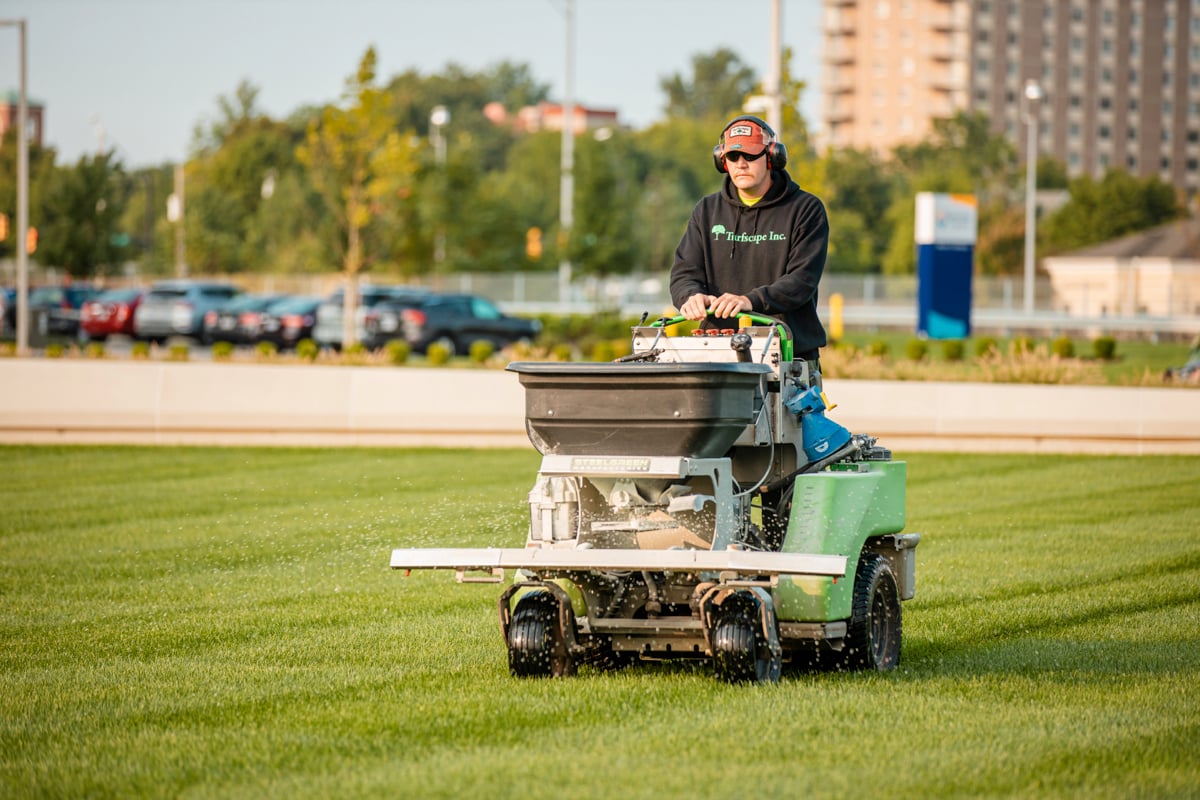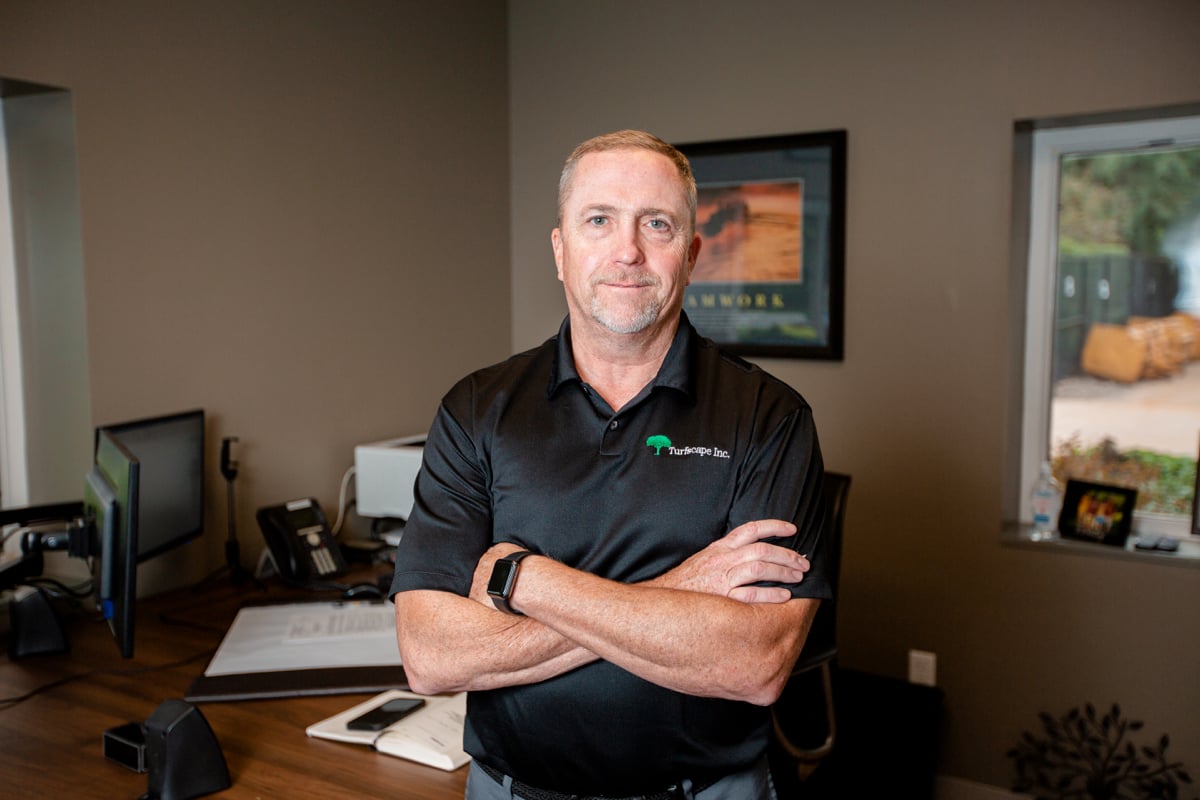If you could use your commercial grounds maintenance budget to do more for you, wouldn't you take that chance? This might be especially true if you knew that you were also reducing your property’s environmental footprint at the same time.
After all, serving two purposes with your limited dollars would be pretty wise, right?
That’s what sustainable landscaping can do for you.

Unsure of what makes sustainable improvements for landscaping commercial businesses? Let’s review what types of outdoor areas qualify and see if your facility could benefit from some of these commercial landscape design ideas.
Sustainable Landscaping Ideas and How You Can Benefit
As you consider what you can do on your Northeast Ohio commercial facility to maximize your budget dollars, sustainable landscaping may come up as a commercial landscape design idea. There are certainly some great reasons to try this strategy.
Sustainable landscaping is the practice of using strategic methods to offset negative environmental impacts, such as stormwater runoff, soil erosion, and sedimentation.
By implementing sustainable landscape design practices that improve efficiency and minimize waste in a way that is cost-efficient over the long-term. Ideas can range from using environmentally friendly fuel in low-emission mowers and equipment to recycling green debris to calibrating pesticide and salt applications.
Here are some strategies landscaping commercial businesses like Turfscape use to deliver more sustainable commercial grounds maintenance to Northeast Ohio properties.
Grass Cutting Height and Grass Cycling Techniques
Grass cycling is a business landscaping idea that ensures your commercial grounds maintenance company uses mulching mowers to return trimmed grass clippings to your lawn.
This improves mowing efficiency on your site, since your mowing crew doesn’t have to collect grass clippings.Those clippings also break down, helping to replace nutrients in the soil. This means you don’t need as much fertilizer.
Mowing the grass to a 3- to 4-inch height ensures we reduce water evaporation and the total amount of water needed for your turf.

Adding Perennials and Increasing Pollinators
By encouraging native perennials to go to seed, they grow back the following season. This costs you less money on plant replacement costs. By incorporating these native plants as a commercial landscape design idea, you also limit pests and diseases.
In addition to providing great aesthetics to your commercial site, native plants also draw in pollinators like bees and butterflies that collect pollen and make the surrounding area’s plants healthier. This helps species like monarch butterflies flourish.

Recycling and Yard Waste
How landscaping commercial businesses use products and equipment is also important for sustainable landscaping.
For instance, reusing yard waste as mulch or compost ensures it’s kept out of the landfill waste stream. Scrap metal and other materials can also be recycled.
Sourcing proper amounts of plant materials means everything is used on your site. Then the pallets those materials are delivered on can also be reused and recycled.

Pesticide and Fertilizer Applications Strategies
When it comes to problems on your commercial site like insects and diseases, a great way to embrace sustainability is to spot treat for these challenges. This conserves product and saves you money.
Using an integrated pest management strategy, which is an inspection-first strategy, Turfscape reduces the amount of chemicals used on your site. We can also collect soil samples on your property to assess soil health and deliver fertilizer only where it’s needed to ensure proper nutrition.

Bioswales and Rain Gardens
One of the best ways to practice sustainable landscaping is to minimize water waste since using too much water can be a big part of your outdoor maintenance costs. This makes reusing water, filtering water, or saving water great strategies.
Standing water can even become a safety hazard, causing erosion, damaging turf, flooding buildings, and creating mosquito-breeding areas.
A commercial landscape design idea that helps manage stormwater is a bioswale. This area is a ditch or swale that uses native plants and gravel to help slow water flowing off of parking lots and concrete paths. But it also looks great as it does this job.
The plants used in a bioswale are usually native, hardy, and strong-rooted. You’ll usually see a mix of perennials and ornamental grasses in bioswales that bring some nice color and texture. In addition to slowing water flow and fixing drainage issues, bioswales don’t need as much maintenance, saving you money.
A similar idea is a rain garden. This shallow depression is planted with deep-rooted native plants that encourage stormwater to soak slowly into the ground vs. rush into the nearest storm drain, filtering pollutants from the water as it flows.

Wildflower Gardens
While many commercial sites have large expanses of turf, those areas do require quite a bit of upkeep during the growing season, including mowing, fertilization, and irrigation.
But toward the back areas, a sustainable commercial landscape design idea is a wildflower garden. This natural space is full of native plants, but designed in a way that is eye-catching.
Some property managers have even been able to use bioswales as places for workers to enjoy or as educational areas on college campuses or ways to make industrial properties more sustainable.

Energy-Efficient Landscaping
How trees are incorporated on commercial sites can also be a commercial landscape design idea that is more environmentally friendly.
For instance, planting trees as windbreaks or for shade serves a functional purpose and also can cool your building in summer or shield your building from icy winter winds. This reduces your utility costs as well.
Solar-Powered Landscape Lighting
Landscape lighting is a great commercial landscape design idea that enhances aesthetics and safety on your facility.
And by using a renewable energy source like solar-powered lights, you can add this helpful addition to your site in a more sustainable way.
Choose Sustainable Business Landscaping Ideas That Help Your Business and Fit Your Budget
Are you looking for ways to maximize your commercial landscape budget and reduce maintenance on your property, while also benefiting from great aesthetics? We hope some of these sustainable commercial landscape design ideas help you.
If you are still looking for ways you can make a positive environmental impact, but still have a great commercial landscape in Northeast Ohio, give Turfscape a call. We know it’s challenging to think of ways you can address these issues while also tackling your long list of responsibilities. We can help target your focus on enhancements that align with your goals.
Let Turfscape help. We’d be happy to discuss some sustainable ideas that could improve your property, reduce your maintenance needs, and fit within your budget so you are the property hero. Request a proposal today. We’ll review your options together so you can make the best choice.



